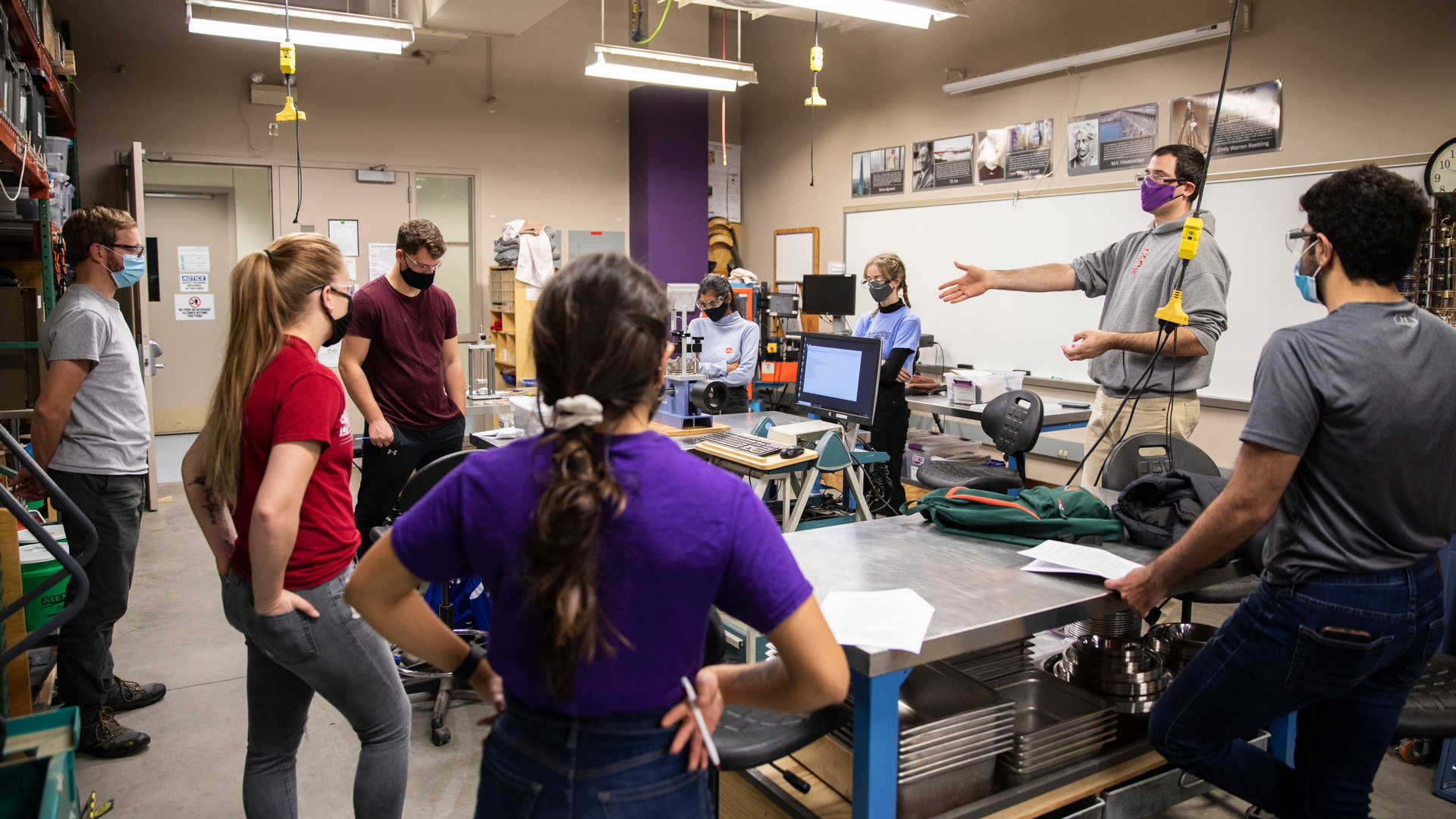Progress Update, February 2024
The St. Thomas 2025 Strategic Plan debuted in February 2021. We continually track and report on our progress; here are key developments from the past year, as of February 2024:
On February 5, we officially opened the doors to the Schoenecker Center, thereby achieving a major milestone towards our goal of leading in STEAM Education. The Schoenecker Center features marquee learning spaces for STEM and arts education, including an engineering high bay, a 150-seat music performance hall, science laboratories, emerging media studios and an art gallery.
Classes on the first day showcased the exciting connections among STEAM fields. Nursing students took their first chemistry lab. Physics and engineering majors began experimenting in Electromagnetic Fields. Science and communication majors sat side-by-side in the interdisciplinary course, "Science, Media and Social Impact."
The five-level, 130,000-square-foot complex is poised to help St. Thomas become a national model for interdisciplinary learning and has received a significant amount of both earned and owned media.
U.S. Representative Betty McCollum visited the Schoenecker Center in January to see how federal partnerships that improve sustainable energy sources and fill important workforce skills gaps are coming to life. McCollum, who served as the chair of the U.S. House Defense Appropriations Subcommittee from 2021-23 and is now the ranking member, is championing several St. Thomas initiatives and is helping to secure significant federal investments. Her support, along with our targeted efforts to increase our federal grant activity, have increased federal funding to St. Thomas significantly in the last four years. St. Thomas will have received a total of $36 million in Congressional appropriations once the current appropriations bill is signed into law. In addition, we have increased grant activity by about $2 million annually and are working to further that activity.
